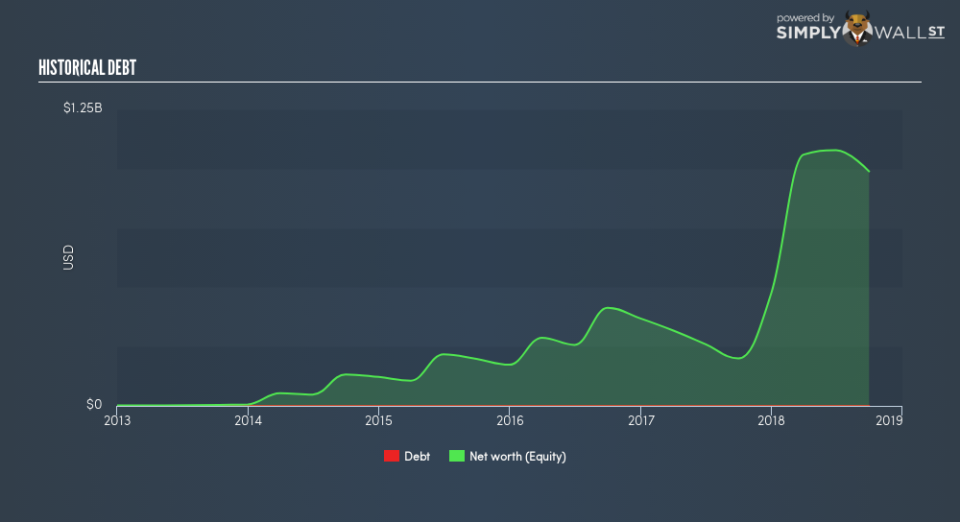Has Sage Therapeutics, Inc. (NASDAQ:SAGE) Got Enough Cash?

Small and large cap stocks are widely popular for a variety of reasons, however, mid-cap companies such as Sage Therapeutics, Inc. (NASDAQ:SAGE), with a market cap of US$4.6b, often get neglected by retail investors. However, generally ignored mid-caps have historically delivered better risk-adjusted returns than the two other categories of stocks. Let’s take a look at SAGE’s debt concentration and assess their financial liquidity to get an idea of their ability to fund strategic acquisitions and grow through cyclical pressures. Note that this information is centred entirely on financial health and is a top-level understanding, so I encourage you to look further into SAGE here.
See our latest analysis for Sage Therapeutics
Can SAGE service its debt comfortably?
A debt-to-equity ratio threshold varies depending on what industry the company operates, since some requires more debt financing than others. A ratio below 40% for mid-cap stocks is considered as financially healthy, as a rule of thumb. For SAGE, the debt-to-equity ratio is zero, meaning that the company has no debt. It has been operating its business with zero debt and utilising only its equity capital. Investors’ risk associated with debt is virtually non-existent with SAGE, and the company has plenty of headroom and ability to raise debt should it need to in the future.
Can SAGE pay its short-term liabilities?
Given zero long-term debt on its balance sheet, Sage Therapeutics has no solvency issues, which is used to describe the company’s ability to meet its long-term obligations. But another important aspect of financial health is liquidity: the company’s ability to meet short-term obligations, including payments to suppliers and employees. At the current liabilities level of US$55m, it seems that the business has maintained a safe level of current assets to meet its obligations, with the current ratio last standing at 19.07x. Having said that, a ratio greater than 3x may be considered high by some.
Next Steps:
SAGE has no debt as well as ample cash to cover its near-term liabilities. Its safe operations reduces risk for the company and shareholders, though, some level of debt may also boost earnings growth and operational efficiency. This is only a rough assessment of financial health, and I’m sure SAGE has company-specific issues impacting its capital structure decisions. You should continue to research Sage Therapeutics to get a better picture of the stock by looking at:
Future Outlook: What are well-informed industry analysts predicting for SAGE’s future growth? Take a look at our free research report of analyst consensus for SAGE’s outlook.
Valuation: What is SAGE worth today? Is the stock undervalued, even when its growth outlook is factored into its intrinsic value? The intrinsic value infographic in our free research report helps visualize whether SAGE is currently mispriced by the market.
Other High-Performing Stocks: Are there other stocks that provide better prospects with proven track records? Explore our free list of these great stocks here.
To help readers see past the short term volatility of the financial market, we aim to bring you a long-term focused research analysis purely driven by fundamental data. Note that our analysis does not factor in the latest price-sensitive company announcements.
The author is an independent contributor and at the time of publication had no position in the stocks mentioned. For errors that warrant correction please contact the editor at editorial-team@simplywallst.com.

 Yahoo Finance
Yahoo Finance 
